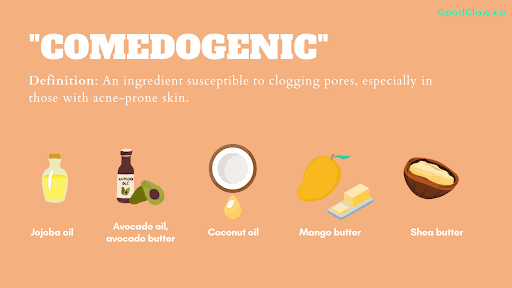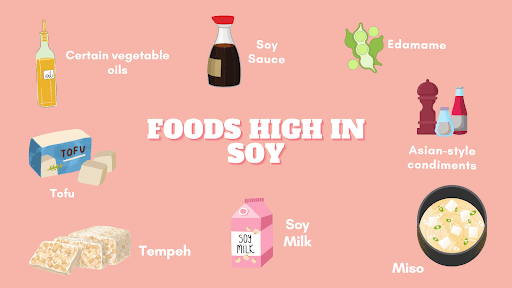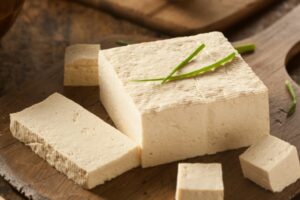With vegan and vegetarian lifestyles becoming more popular and mainstream, soy milk has become a fixed staple item in many of our diets. Seen as a healthy alternative to dairy products and meat, soy is also used in food items such as tofu, used to replace meat in popular vegan dishes.
But does soy cause acne? When we see adverts about “clean eating” and “clean beauty” in marketing, many will cite soy as a natural or even healthy ingredient. The truth is that soy can cause acne problems and flare-ups, and can even aggravate hormonal acne. In this article, I’m going to explain the hormonal effects of soy, give you a list of foods high in soy to avoid and explain why this so-called “clean’ food staple might actually be breaking you out.
Does Soy Cause Acne?
While soy itself isn’t going to cause acne as soon as you eat or come into contact with it, there are a number of ways regular soy consumption can interfere with your skin. There are typically four ways soy can cause acne flare-ups, and I’m going to list them below:
Through Hormonal Disruptions
One of the main ways soy can cause acne is through hormonal disruptions, especially in women. Soy contains isoflavones (a form of estrogen) which can increase estrogen while disrupting the female body’s natural hormone balance, preventing the body’s natural estrogen from functioning correctly.
In addition, when soy is consumed in excess, the spike in androgens (male hormones) in the body can also cause a hormonal imbalance, leading to low estrogen levels and high male hormone levels. This hormonal imbalance can lead to acne, as elevated androgen levels have been linked to higher acne prevalence.
As always, when the body’s hormones are out of whack, you might first start seeing the consequences show up on your skin.
Disrupting The Digestive System
Another way soy can cause acne problems is via the digestive system. As you’re probably already aware, diet plays an essential and vital role in the management of acne and acne-prone skin. Eating inflammatory foods and foods that spike blood sugar can overproduce insulin and cause breakouts.
So, does soy cause inflammation? Not directly, but soy can be difficult for the body’s digestive system to break down, especially if it’s super processed. Any soy product that has been manipulated – such as “textured soy protein” or “soy protein isolate” – should be categorically avoided.
When the body’s digestive system is unable to process certain foods, you’re going to end up with inflammation and, yep you guessed it, some pretty nasty inflammatory acne breakouts to boot. So, if you do plan on continuing to eat soy, it’s best to stick to soy products that are completely natural (such as edamame.)
Soy Allergies
Can you be allergic to soy? Absolutely – in fact, around 1 million people in the US reportedly suffer from soybean allergies. While this concerns just 0.3% of the US population, that’s still almost 1 million people potentially suffering from inflammation, breakouts and more! Soy allergies can cause inflammation both in the internal body and on the skin, so if you’ve recently added soy into your diet (for example, if you’ve recently switched to a vegan or vegetarian diet) and you’re experiencing strange skin symptoms, you might want to cut out soy products and see if it helps.
As I explained in one of my previous articles, switching to a vegan diet can sometimes trigger skin problems and acne. Many vegan diets are high in blood-sugar spiking carbs, and lots of vegan products also contain antinutrients, which disrupt the body’s absorption of zinc.
You can still eat a plant-based diet, adhere to a vegan lifestyle and keep your acne at bay, but it’s important to select the right food products and ensure adequate vitamin intake. Take a look at the article I linked above for tips on how to create the ultimate plant-based acne-friendly vegan diet.
In Skincare Products
The final way soy has been linked to acne is through skincare products. Soy is a comedogenic ingredient: this means that when applied topically (via a face cream, for example) it can clog the pores (known as the comedones) and cause breakouts.
You can identify a skincare-related breakout quite easily, as the pimples typically tend to resemble small whiteheads. That being said, comedogenic ingredients can also contribute to clogged pores in cystic acne, which is why it’s so important to avoid comedogenic ingredients if you have severe acne. Comedogenic ingredients are everywhere in skincare, with some of them even being marketed as “clean beauty” or “natural skincare.”

So, for those of us with acne-prone skin, loading our skin with soy-based skin care products is going to do nothing except clog the pores and cause irritating breakouts. If you’re using skincare products with soy, this might explain recurring, inexplicable breakouts.
Try cutting out your soy-based skincare products and see if your problem improves. If not, you might want to look at soy sources in your diet.
Is Soy Good For You?
This question is a little complicated for me to answer because soy has been proven to provide both beneficial and negative effects when consumed. As my major concern is skin health (and specifically the management of acne-prone skin) I’d say that soy is, overall, bad for you – or at least bad for your skin.
Not only does soy contain high levels of antinutrients which make it more difficult for your body to absorb nutrients, but the isoflavones in soy have also been linked to cancer, especially in women (where soy has contributed to fluctuating and disrupted hormone levels.)
That being said, studies do support the idea that soy can be a beneficial addition to a healthy diet. Being rich in plant-based nutrient compounds, many claim that soy provides overall benefits to health and wellbeing, with some evidence suggesting that higher soy consumption can be linked with lower levels of cholesterol and obesity.
While this might be true, there are lots of different foods that provide the same benefits without the added downsides. Plus, contemporary soy products are rarely completely natural and non-manufactured. Most soy products sold in supermarkets have been refined, and modified and are considered GMO as a consequence. For this reason, even if I put the acne question to the side, I find it difficult to recommend soy as a protein or meat replacement.
Foods That Are High In Soy
If you want to try to completely cut soy out of your diet, these are the items that you’re going to want to avoid:

Soy Milk
Soy milk has become the #1 go-to when it comes to dairy-free milk, but it’s a must-avoid when it comes to acne-prone skin. The potential for hormone disruption and high phytic acid is a disastrous combination for the skin. I’d recommend opting for coconut milk as the best dairy-free milk alternative.
Tofu
Tofu is used frequently in most vegan diets, typically used as a replacement for meat and eggs. While tofu can be cheap and convenient for any busy vegan, it’s best to avoid it for its high soy content (and thus heavy acne-causing properties.)
Plant-Based/Meat-Free Burgers
My rule when it comes to most food is simple: if it’s super synthetic, modified or manufactured with artificial ingredients, it’s probably not going to be great for your skin. While vegan burgers and meat products might be marketed as “plant-based and natural”, they typically contain chemical ingredients used to bind and conserve the product. Avoid these, especially when they come from the frozen aisle in the supermarket.
Asian and Asian-Style Condiments
Soy is heavily featured in traditional Asian cuisine, with some even claiming that its high use in Asian food contributes to the overall low levels of conditions such as heart disease, diabetes and obesity in Asian countries. However, Asian and Asian style condiments often contain high concentrates of soy, making them unsuitable for acne sufferers.
Certain Vegetable Oils
While you might find it easy to avoid soy-based products like soy sauce, soybeans and tofu, you should be careful to always check the ingredients label when you buy any new food item. Certain foods and oils contain sneaky amounts of soy, including certain vegetable oils. Always read the label, and I’d recommend coconut oil over vegetable oil for acne-prone skin.
Hidden Soy Products – What Else Should I Avoid?
Other foods to watch out for when it comes to secret soy include the following:
- Bread
- Gravies and sauces
- Seasonings and spices
- Frozen ice cream and desserts
- Crackers and salty snacks
- Cooking sprays
What Foods Cause Acne?
When it comes to acne and diet, this is pretty much my speciality. Having suffered from acne for years, tried every possible acne skincare product and wound up worse than where I started, it was finally changing my diet that changed my skin.
I’m an advocate for clean, natural eating: anything that is modified or manufactured isn’t going to do your skin any favors. And when it comes to acne-prone skin, it’s important to be even more prudent about what you put in your body.
While it’s impossible to list every food that’s bad for acne (and why) in one blog post, you can access all this information in my eBook, Unmasking Acne. In my eBook, I talk about my own personal journey with acne and how I used simple food science to combat my breakouts.
To give you an idea of what an anti-acne diet entails, I’m going to go over the basics. When it comes to an acne-friendly diet, you need the following:
Limited Dairy
We all know the consequences of dairy on acne-prone skin. Consuming dairy products trigger elevated insulin spikes, leading to the body overproducing sebum and causing nasty breakouts. I’ve listed lots of dairy alternatives in my eBook, so you can get the same nutrients without the blood sugar spike.
No Artificial Sugars
It can be tempting to opt for the “0% fat” yogurt or “100% sugar-free” soda. But if something appears to be too good to be true, it probably is! Most fat-free and sugar-free products are loaded with artificial sweeteners and chemicals, and are disastrous for acne-prone skin. In my eBook, I explain how to navigate this when grocery shopping.
Read The Label!
It’s hard to not overstate this point repeatedly. When grocery shopping, always, always, always read the label! Ideally, your diet should be as natural as possible to the point where you don’t need to read endless labels. However, for the products that do contain an ingredient label, always read it and look out for hidden dairy, sugars and artificial sweeteners.
Soy & Acne FAQS
Soy contains isoflavones, which are known to have antioxidant benefits when consumed regularly.
Excessive consumption of tofu, which is high in soy, can contribute to elevated levels of androgens and impact the body’s hormonal balance. This can lead to the development of hormonal acne.

